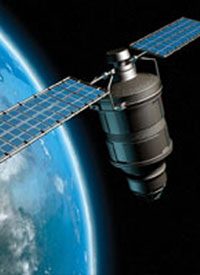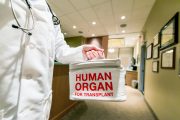
Let’s face it, the International Space Station resembles a fuel storage tank more than it does the Orbiter Hilton space station (complete with a Howard Johnson’s restaurant) depicted in 2001. We haven’t even sent humans back to the Moon since 1972, much less built a permanent base there. And compared to the warp-5 starship Enterprise, our space shuttles and the Russian Soyuz spacecrafts look like Roman chariots!
However, while we may not commute to the Moon aboard passenger shuttles as in 2001, we have achieved a milestone — our first traffic accident in space!
Space agencies in both Russia and the United States announced this week that a collision between two satellites occurred about 485 miles above Siberia at about 1700 GMT (12 Noon EST) on February 10. The collision involved a 1,235-pound American Iridium commercial satellite launched in 1997, and a nearly one-ton Cosmos-2251 military satellite — believed to be nonfunctioning — launched in 1993.
"We knew this was going to happen eventually," Mark Matney, an orbital debris scientist at Johnson Space Center in Houston, told AP.
"It’s a very important orbit for a lot of satellites," said Air Force Colonel Les Kodlick from the U.S. Strategic Command.
The collision, which is the first such accident involving two satellites in history, raised concerns about debris drifting into the orbit of the International Space Station, which orbits at an altitude of 220 miles, but such fears were relieved by reports from both nations.
"The collision of these two space apparatuses happened by chance and these two apparatuses have been destroyed," Major-General Alexander, first deputy commander of Russia’s Space Forces, told Reuters news service.
"The fragments pose no danger whatsoever to Russian space objects," said Yakushin. When reporters asked the Russian general if the debris posed a danger to other nations’ spacecraft, he gave an indefinite answer: "As for foreign ones, it is not for me say as it is not in my competency."
NASA spokeswoman Beth Dickey told CNN: "There is some elevated risk, but it is considered to be very small to the ISS and to the other satellites that NASA has in orbit." Alexander Vorobyev, a spokesman for the Russian civilian space agency Roscosmos, said on Russian state-controlled television that "for the international space station, at this time and in the near future, there’s no threat."
Dickey continued: "This is the first impact between two intact satellites traveling at hypervelocity. There have been some other occasions when things have accidentally collided in space, but they have been parts of rockets or parts of satellites and [created] a very small cloud."
A report in the Washington Post quoted a NASA memo that said officials determined the risk of space collisions to be "elevated," but have estimated it as "very small and within acceptable limits."
Bureaucrats at the European Union wasted no time in using the world’s first space accident to lobby for an international "code of conduct" for outer space at a UN forum. Speaking at the United Nations Conference on Disarmament forum in Geneva, the representative of the Czech EU Presidency said on February 12 that the leading nations involved in space programs should adopt a code of conduct for civil and military activities in space. "States conducting outer space activities should also refrain from any intentional action which will or might bring about … the damage or destruction of outer space objects," said the Czech official. The Czech Presidency submitted a Draft Code of Conduct For Outer Space Activities to the UN disarmament conference that had been approved by the Council of the European Union last December 8-9.
With the United Nations already seeking to gain control of the Earth’s oceans by means of the Law of the Sea Treaty (LOST), can attempts for the UN to regulate outer space be far behind?
While many of us who grew up watching The Jetsons were disappointed that flying cars of the type that George Jetson used to commute to his job at Spacely Space Sprockets had not yet been made available, is it possible that one day UN traffic cops could be policing traffic in outer space?
Maybe a TV network will produce a new series combining elements of Adam 12 with Star Trek — a series about two UN police officers on patrol in their space ships, looking for errant satellites to destroy and speeding space shuttles to ticket.
It could be called — LOST in Space!
Photo: AP Images



